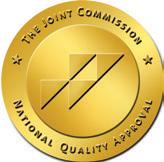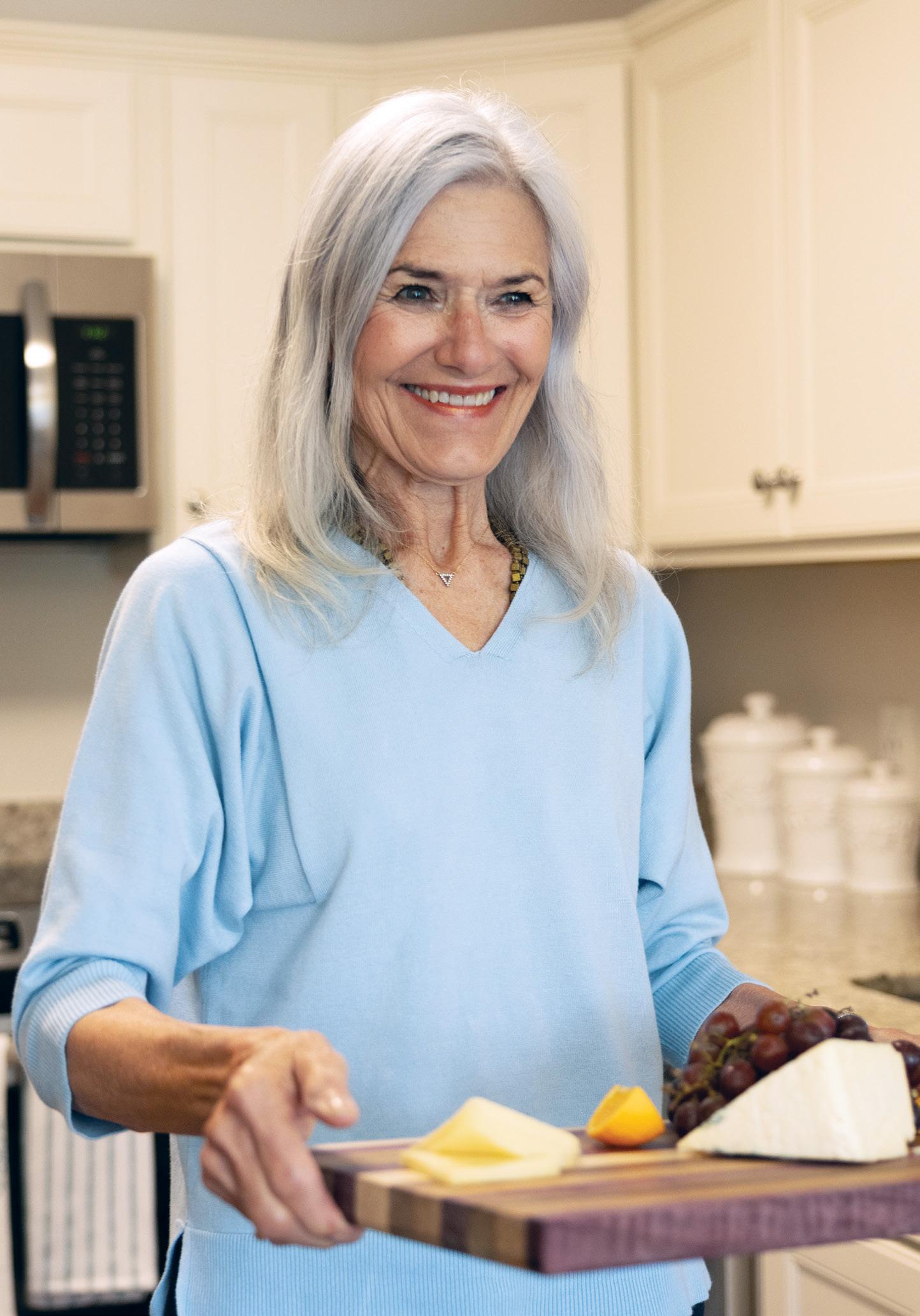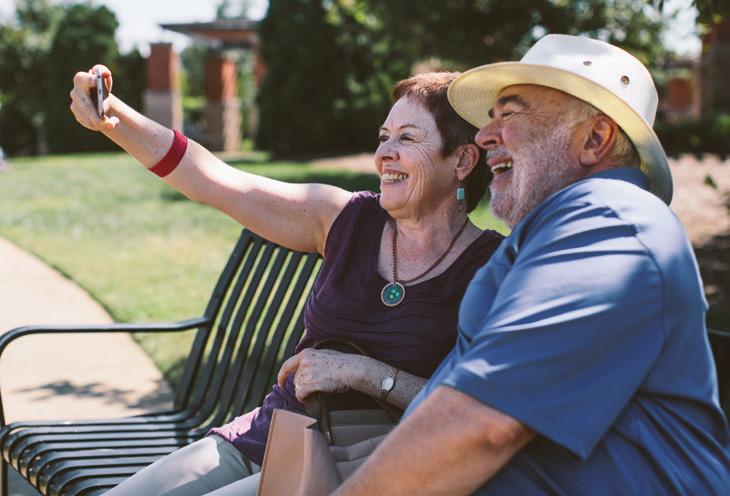


















Commentary by Christine Stolle
When planning for your future, it’s important to understand the roles of a Revocable Living Trust (RLT) and a Medicaid Asset Protection Trust (MAPT). An RLT helps avoid probate and ensures your assets transfer smoothly to your heirs but does not protect assets from long-term care costs or Medicaid eligibility rules. In contrast, a MAPT is designed to shield your assets from Medicaid spend-down requirements after a five-year look-back period, preserving wealth for your loved ones.
A trust — whether revocable or irrevocable — only works if it’s properly funded. If assets aren’t retitled into the trust, they remain vulnerable to probate, creditors, or Medicaid spend-down. Funding your trust is simply the process of transferring assets into the trust’s name, ensuring they receive the intended protections. What is a Medicaid Asset Protection Trust?
A MAPT is an irrevocable trust that protects assets from long-term care costs while helping you qualify for Medicaid. While you give up direct ownership, you appoint a trustee—often a trusted family member or professional—who manages the assets. You retain the right to live in your home and can receive income from trust assets. Upon your death, the assets pass to your beneficiaries outside of probate.
Key benefits of a MAPT:
• Avoid probate: Assets in the MAPT bypass probate, saving time, money, and stress for your loved ones.
• Protect privacy: Unlike wills, trusts are private documents.
• Preserve out-of-state property: Avoids probate in multiple states.
• Protect against scams: Assets aren’t in your direct control, reducing vulnerability to fraud or undue influence.
• Medicaid eligibility: Assets in the MAPT (after five years) are not counted for Medicaid, helping preserve your estate.
• Safeguard your home: Protect your home from Medicaid estate recov-
ery after death if it’s been in the trust for five years.
• Maintain control: While the trust owns the assets, your trustee manages them according to your wishes.
• Protect family wealth: Ensures assets go to your heirs rather than being spent on long-term care costs. The five-year look-back rule Medicaid reviews financial transfers over the five years before applying. Any transfers to a MAPT during this period can result in a penalty. The five-year clock starts when you fund the trust— not when you sign it. Early planning is essential.
What does “funding the trust” mean?
Funding means retitling assets into the trust’s name, including:
• Real estate
• Bank and investment accounts
• Life insurance policies
• Personal property
• Business interests (case by case) Assets not properly transferred remain exposed to probate and Medicaid spend-down.
Retirement accounts and MAPTs To protect your retirement assets, strategic planning is essential when utilizing a MAPT – it is important to work closely with your financial advisor and CPA. This collaboration ensures you can strategically withdraw funds (“harvesting”) to minimize taxes and safeguard your assets.
Final thoughts
In Indiana, funding your trust correctly and early is key to protecting your assets and starting the Medicaid five-year look-back clock. Our team at Dillman & Owen Estate and Elder Law collaborates with your financial and tax professionals to ensure your plan stays current and effective. Reach out to us anytime — we’re here to help secure your future and give you peace of mind.
For more, visit dillman-owen.com.
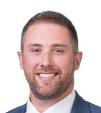
Commentary by David Stordy
After an Indiana winter, summer sunshine feels like a gift. But when the heat kicks in, it’s more than just uncomfortable -- it can pose real risks to your health.
As we age, our bodies don’t regulate temperature as well. You might not feel thirsty even when you’re dehydrated. Conditions like heart disease or diabetes, or medications that affect circulation, can make it harder to stay cool.
A few smart summer habits
• Drink water often – even if you don’t feel thirsty. Keep a bottle nearby and aim to sip throughout the day.
• Keep your home cool
– Use air conditioning or fans and close the blinds during the hottest part of the day.
Conditions like heart disease or diabetes, or medications that affect circulation, can make it harder to stay cool.
• Eat light, cool meals – Avoid using the oven when it’s especially hot. Salads, fruit, and pre-cooked proteins are great options.
• Watch for signs of heat stress – Dizziness, fatigue, swelling, or muscle cramps are all signs to slow down and cool off.
Need a Little Extra Support?
If everyday tasks start to feel more tiring this time of year, you’re not alone. BrightStar Care offers in-home help on your terms—whether it’s assistance with meals, companionship, or personal care. Our team is here to help you stay safe and independent all summer long. You’ve earned the right to enjoy the season — comfortably and confidently.
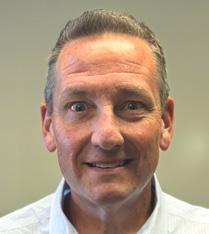
David Stordy is the directorowner of BrightStar Care. To learn more about home care or schedule an assessment, call BrightStar Care at 317-706-0799 or visit brightstarcare.com.

Commentary by Dr. Carol Weesner
Boomers, blue meanies and Silly
Putty — perhaps the names take you back to the 1960s, elementary school bullies, or playing years ago with some wonder substance you had fun playing with until your mother found it stuck under the kitchen table. But alas, none of this is the case in this article. All the above terms are slang for magic mushrooms, or medically speaking, psychedelic mushrooms. Interestingly, after all the years of bad press and parental distress, they may turn out to be quite beneficial, in the appropriate doses and setting, of course.
Johns Hopkins University, among other universities domestic and foreign, has published several studies on psychedelic mushrooms in the treatment of depression, adding credibility to the idea. I don’t imagine they had any trouble finding volunteers for the control group, or for those who struggle mightily with depression and haven’t found a lasting solution. For those who haven’t had depression, count your blessings, because no one can truly
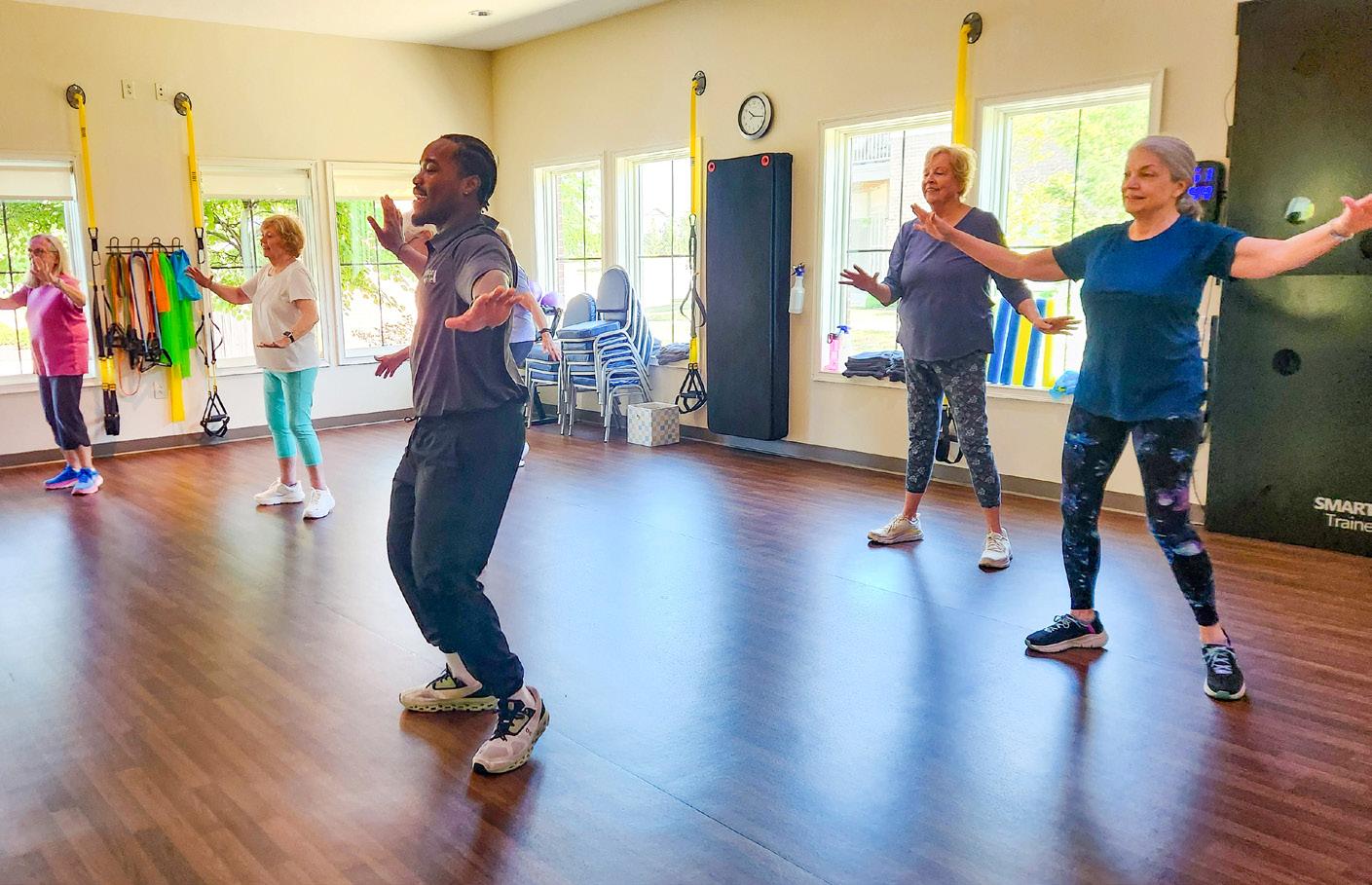
understand its depths and effects on daily life unless you’ve been so touched. The ingredient of note is psilocybin, which can cause alterations in perception, mood and thought processes. It is thought to act on serotonin receptors
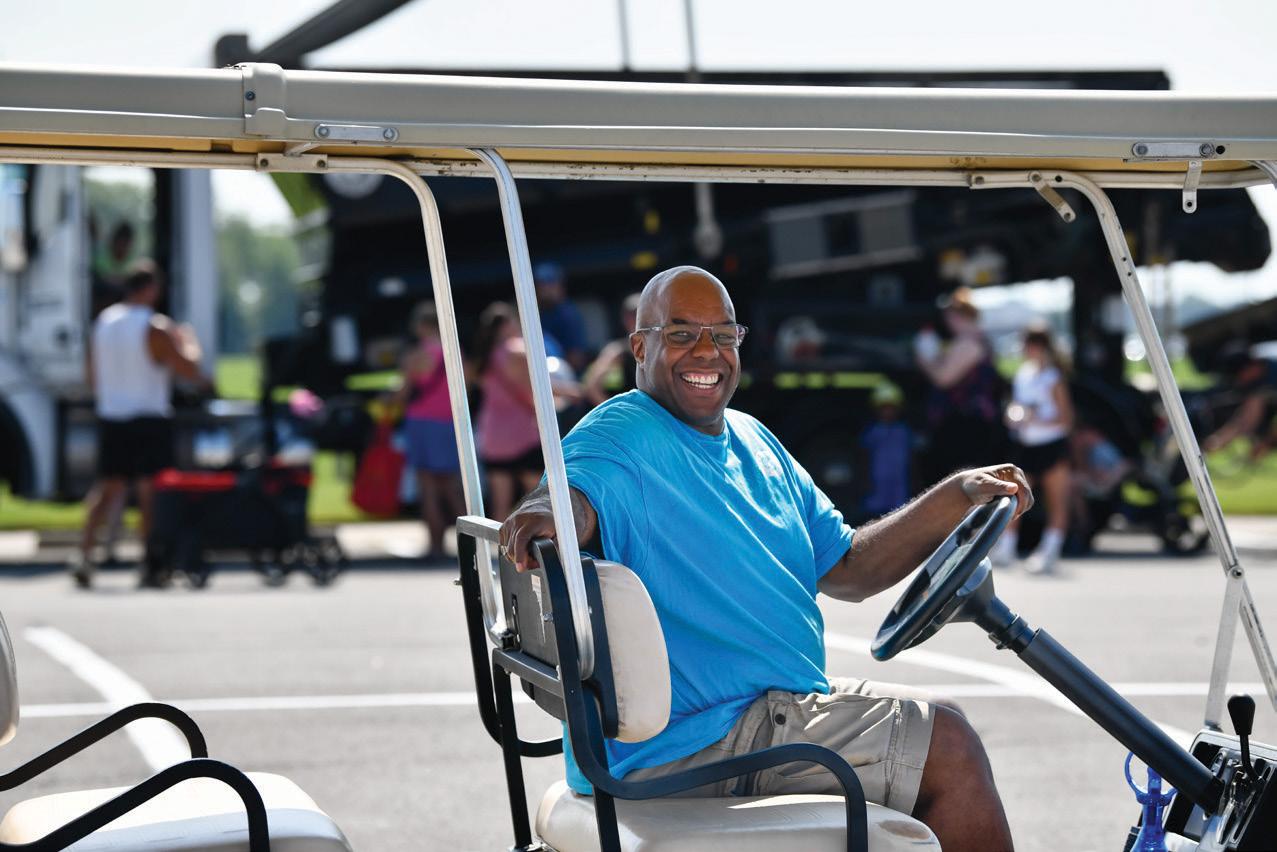
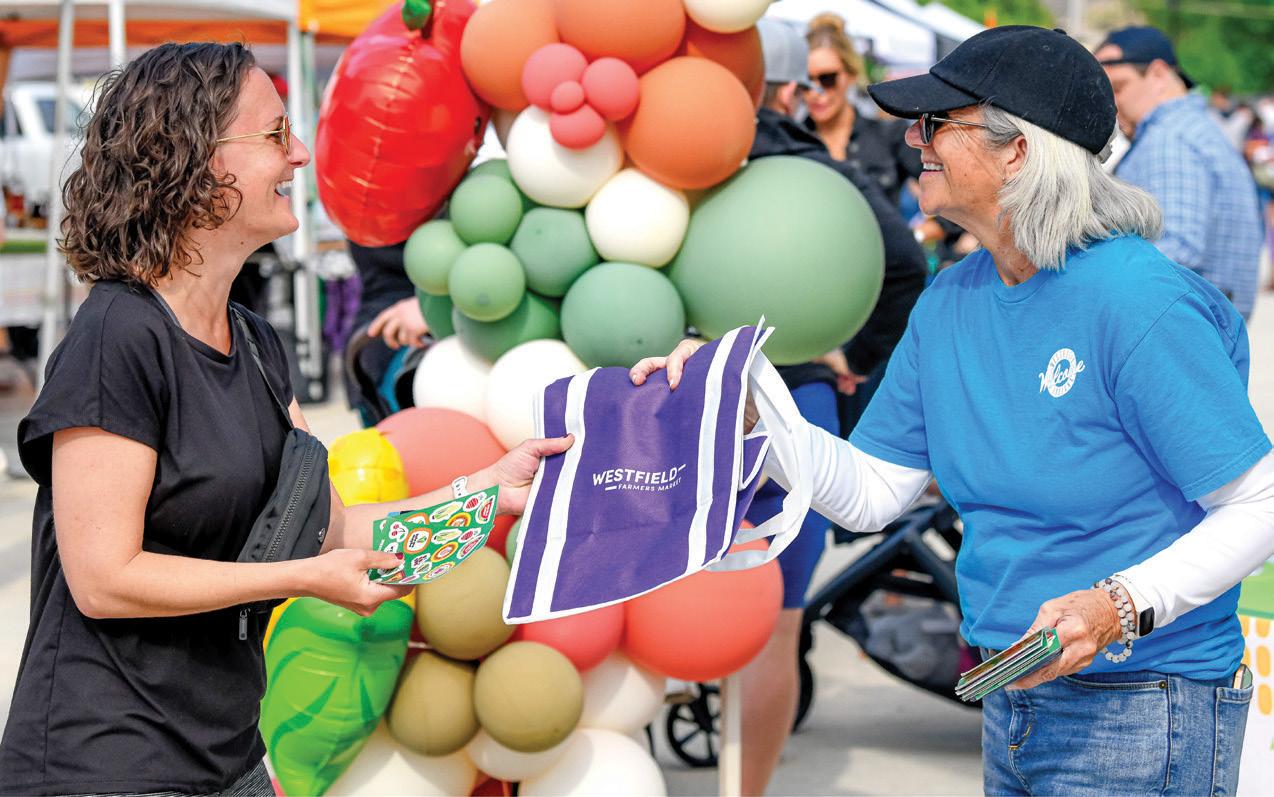
in the brain (the same receptors targeted by drugs such as Prozac) that affect depression and anxiety. One of the most exciting findings is that one or two psilocybin treatments have been found to have rapid and persistent positive
effects, sometimes lasting up to a year. Research has shown the treatment to be safe in supervised settings, but temporary side effects such as nausea, headaches and anxiety may be seen. It is not recommended yet for schizophrenia or severe psychosis.
Those affected by Parkinson’s disease should take note as well. The University of California San Francisco has found that individuals with mild to moderate disease showed improvements in mood, cognition and motor function. Again, the improvements in these symptoms lasted weeks to months. Psilocybin has also been studied and shown promise in the treatment of various addictions. It is very exciting and promising that something so long maligned may benefit so many. Bell bottoms, short basketball shorts and Chuck Taylor shoes are back in vogue, too, so what’s next?
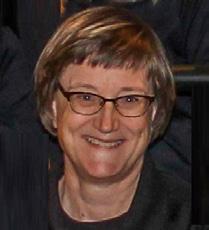
Whether you’re greeting attendees, assisting with rides, or making new friends, your involvement makes a meaningful impact. Volunteer with us to help create a stronger, more welcoming community. There's a volunteer opportunity for anyone looking to make a di erence!



westfieldin.gov/volunteer or scan the QR code to find out how you can get started.
By Mark Ambrogi mark@youarecurrent.com
Dr. Malaz Boustani’s research on dementia care has expanded in the last year.
Boustani’s research led Eskenazi Health Aging Brain Center in Indianapolis to be established in 2008. The center combines research and clinical care, resulting in the rapid translation of research discoveries into clinical practice. The center works closely with the patient’s primary care provider and the multidisciplinary care team, consisting of physicians, nurses, psychologists, care coordinator assistants and social workers and develops a personal treatment plan for each patient. The plan includes medications as well as nondrug treatments to improve the quality of life for patients and caregivers.
also the family member or caregiver. So, when we developed the program, we wanted to improve the quality of life of the patients living with dementia and also the quality of caregivers and keep them in their homes and their communities as long as possible.”
A Carmel resident, Boustani said his team evaluated the program in a controlled trial and found that it worked.
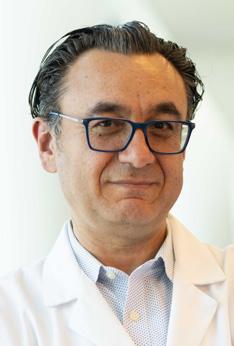
“This program focuses on brain health,” Boustani said. “The brain is the only organ in the body you can’t transplant. The dementia syndrome is one of the most common problems to make you lose your brain, starting with affecting your memory and language. It starts affecting your emotion and then finally starts affecting your ability to function. Unfortunately, certain patients end up leaving their home and live the rest of their lives in an institutional setting. This doesn’t just cause a problem for the person that has dementia, but
“That led us to publish in the highly prestigious Journal of the American Medical Association,” he said. “I wanted to make sure my work didn’t stay on the bookshelf, so I converted it into a clinical program. This clinical program has been able to do exactly what we did in the original research study and was able to keep people at home much longer than other programs without jeopardizing the quality of life of the patient and the quality of life of their care partner.”
In 2024, the Centers for Medicare and Medicaid Services Innovation Center announced a new dementia care and payment model. It was developed, in part, by Boustani and providers at Eskenazi Health, who were part of the team that helped guide the payment model of care. Eskenazi Health became one of the first health systems to utilize the new care model. Guiding an Improved Dementia Experience is the first model established by the Innovation Center that directly ad-
dresses the needs of unpaid caregivers of those living with Alzheimer’s disease and related dementia. The model aims to provide comprehensive support and resources for caregivers intended to help reduce caregiver strain and to keep patients in their homes.
“This month, this program or a prototype of it is now available across the entire nation and is delivered across 400 organizations,” Boustani said.
The GUIDE model became available on July 1, 2024, with Eskenazi Health being one of the first to implement it.
“Between 2008 and 2024, I worked with colleagues across the country and with the Alzheimer’s Association to make sure the program is available to every American,” he said. “The benefit of this program is it’s a win-win for everybody. If you are a patient living with dementia, it improves your quality of life. It prevents you from worsening your functional decline and your behavior and depression. It also prevents the stress and depression of your care partner. It reduces your need to go to the hospital inappropriately by almost 50 percent. It keeps you at home longer by at least 24 months. It reduces the cost of care substantially.”
Boustani said reducing insurance cost is why the Centers for Medicare and Medicaid Services support the model.
Continued on Page 7
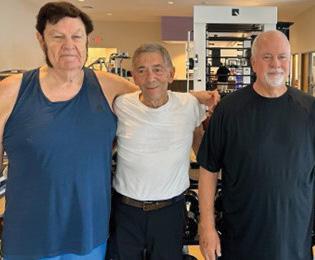
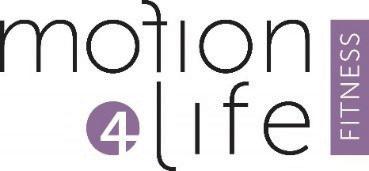
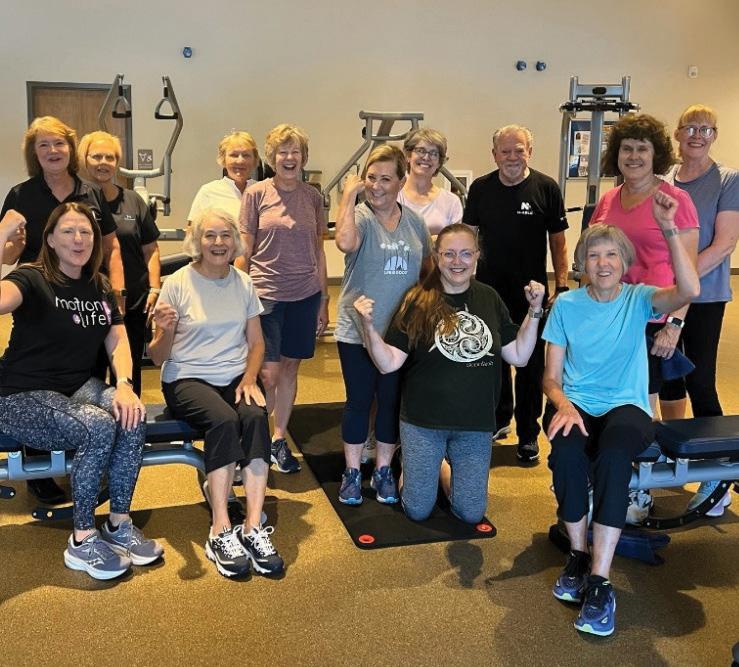
Meridian Audiology LLC, a private Audiology practice, was founded by Dr. Alison Wyss, Au.D. and Kira VonBlon, M.S., after working together in an ENT setting for more than 12 years. The seasoned Audiologists strive to consistently provide premier care to patients with hearing loss, tinnitus and auditory processing disorders as well as those who want to protect their hearing from damage.
In stark contrast to the medical audiology world where patients are in and out in quick succession, private practice allows Ali and Kira to spend whatever time their patients need from them for their individual hearing healthcare situation.

sandwich from their hometown in Ohio.”
The Meridian Audiology Audiologists pride themselves on keeping up with and offering the top-of-theline newest technology in hearing aids, tinnitus and auditory processing disorder.
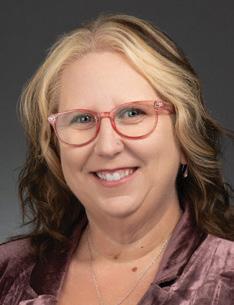
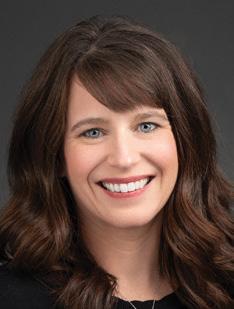
“The number of patient referrals, along with referrals from area Consierge and Internal Medicine Physicians speaks volumes to us,” VonBlon said. “We have the trust of our patients and many area physicians. They tell their friends and their patients about us, and we cannot buy that kind of loyalty and referral!” She goes on to say “We’ve also had many of our previous patients find and follow us to Meridian Audiology and that is a testament to our relationships we build with them. I even went on vacation this year and made a special stop along the way to bring a longtime patient back their favorite
W We are also available to speak to your local community clubs about hearing and hearing loss Dr. Wyss states, “We’ve done many presentations to community clubs in the area and the participants always appreciate our time in giving them information about hearing loss, cognitive decline and tinnitus as well as answering their questions.”
Meridian Audiology accepts most major insurances, offers convenient scheduling via phone, email, or online and are independent of other medical practices or hospitals. Hours are 9am-4pm MondayFriday by appointment only. T They are located at 911 E 86th Street, Suite 035. Phone 317-731-5386. Email info@ meridianaudiology com Website: meridianaudiology com
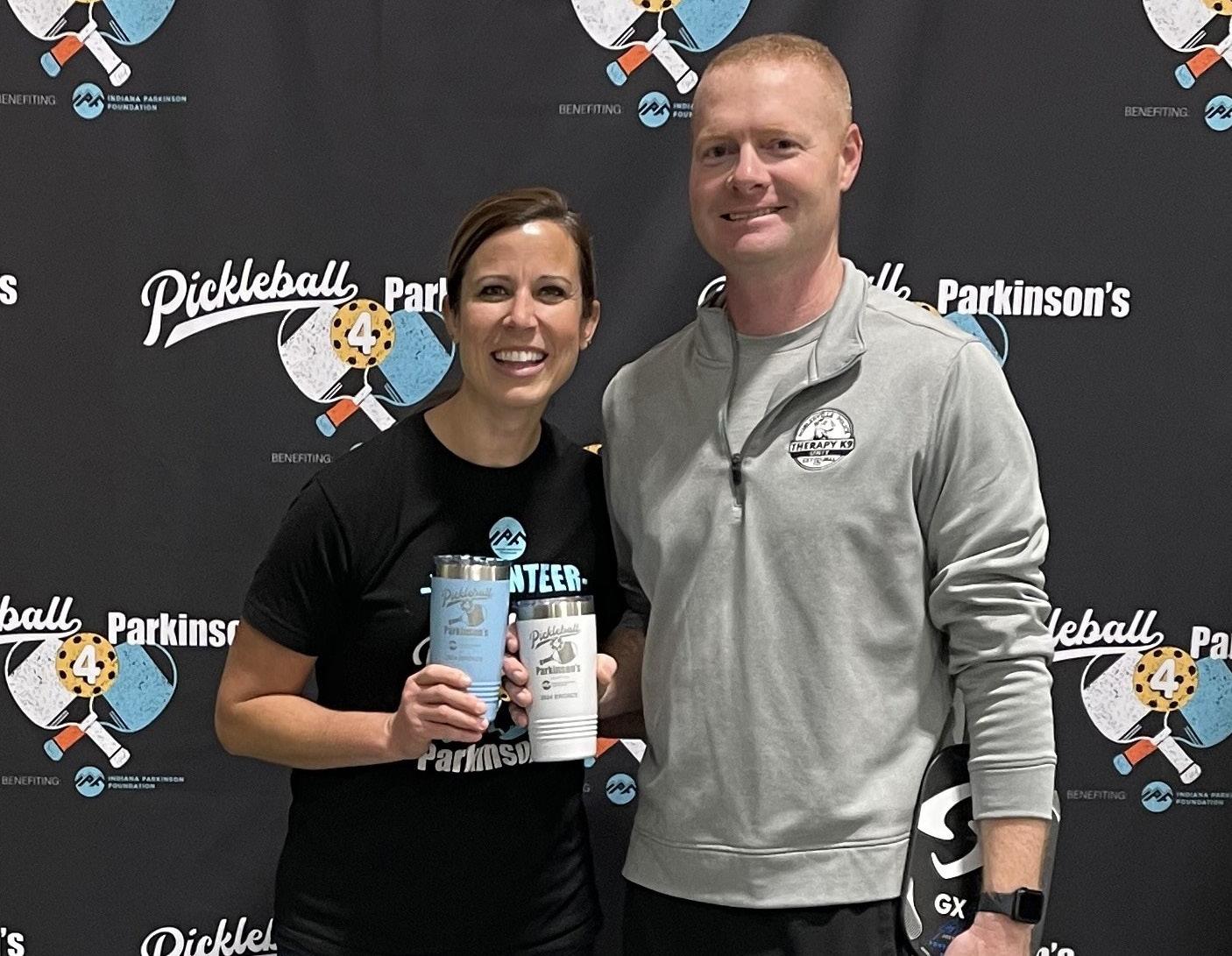
By Mark Ambrogi mark@youarecurrent.com
Indiana Parkinson Foundation program director Addie Cunningham views pickleball is as the sport that draws a wide range of interest.
“We wanted to create a fun, active and inclusive way for our community to come together in support of individuals and families affected by Parkinson’s disease,” Cunningham said. “Pickleball is a sport that brings people of all ages and abilities together, and it perfectly aligns with our mission to promote movement, connection and hope.”
So the nonprofit is using Pickleball 4 Parkinson’s as a fundraiser. The oneday tournament, set for Nov. 15 at The Picklr, 9847 Cumberland Pointe Blvd., Noblesville, features women’s doubles, men’s doubles and mixed doubles. Players compete in skill levels ranging from 3.0 to 4.0-plus, divided into two age divisions, 50 and older and 50 and under, Cunningham said. All proceeds benefit the Indiana Parkinson Foundation and their mission to support individuals and families impacted by Parkinson’s disease.
“The idea grew from recognizing how powerful physical activity and community engagement can be in improving the
lives of those impacted by Parkinson’s.
The Noblesville resident said several people with Parkinson’s will participate in the tournament while others will volunteer or be a part of the event through cheering on the participants. All funds raised through Pickleball 4 Parkinson’s will support the vital programs and services we offer across Indiana, providing exercise, encouragement and education to those affected by Parkinson’s and their families.”
Noblesville-based Indiana Parkinson Foundation has CLIMB, an evidence-based exercise class developed for living with Parkinson disease.
“Our CLIMB classes incorporate many of the same types of exercises that pickleball encourages, but we haven’t included actual pickleball in the classes out of consideration for safety,” Cunningham said. “Pickleball isn’t a good fit for everyone with Parkinson’s.”
Registration for nonmembers of The Picklr is $65 per player. The first event is included in the registration cost, each additional event is $20. The Picklr members’ registration is $50 per player. The first event is included in the registration cost, each additional event is $10.
For information about sponsorship, volunteering or to register to play, visit indianaparkinson.org/p4p/.
By Ken Severson editorial@youarecurrent.com
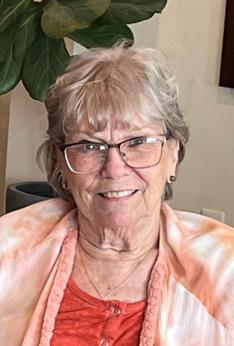
Better late than never. That’s how Sycamore Reserve resident Terry Klemann probably felt after moving into the facility in February.
A native of St. Louis, Klemann, 71, was content living in an apartment complex when she was having conversations with her two adult children about moving into a facility that was more elderly friendly.
Balking at first, Klemann decided to look at a couple of facilities, with Sycamore Reserve in Indianapolis being one of them.
“I really didn’t want to move,” Klemann said. “But my kids asked me to reconsider, and I said I’d take a look.”
After checking out Sycamore, Klemann fell in love with it and ruled out all other options.
“There was really no comparison between the (the other options),” Klemann said. “They are super, and they treat you really well.”
Klemann enjoys the food and service she receives, plus it’s pet friendly, something very important to Klemann because she has a Lhasa Apso named Lady.
Klemann, who has been single for nearly 30 years, also appreciates the social opportunities at Sycamore Reserve.
“(Sycamore Reserve employees) take you to the bank, pharmacy, the grocery
“There are also a lot of outings. You get a weekly agenda so you know what’s going on be it bingo, happy hour, live entertainment.”
— Terry Klemann

store — really, anything you need,” Klemann said. “There are also a lot of outings. You get a weekly agenda, so you know what’s going on, be it bingo, happy hour, live entertainment.”
Klemann moved to Indianapolis several years ago to be near a younger sibling who had an illness. Prior to that, she lived in Illinois and Upstate New York. She has a son in Arkansas and a daughter in New York.
Klemann also worked at Macy’s for nearly three years, but after her brother died, she thought of moving but chose to stay in Indianapolis because of friends. That’s when she moved into an apartment until her children brought up the topic of a senior facility with things to do.
“I can go swimming in the beautiful swimming pool and there’s a nice garden with pool parties and so many other things,” Klemann said. “If you’re bored here, it’s your own fault.”
Continued from Page 5 program functions under the Sandra Eskenazi Center for Brain Care Innovation.
“No one wants to live in a nursing home,” he said. “No one wants to go to the hospital for just the sake of it and no one wants to burden their loved one. Everyone wants to optimize their quality of life, and this program fits all of that.”
Boustani said he and his wife each have family members who lived with dementia. Unfortunately, Boustani said the program did not expand quickly enough for his wife’s parents in Kentucky and his father and mother in Syria to take advantage of it.
The Eskenazi Health Aging Brain Care
“Through decades of research in brain health, we have learned that by reorganizing care, we can obtain better outcomes at lower costs,” Boustani said.
The team that helped develop the innovative model includes Boustani; Dr. Christopher Callahan, chief research and development officer of Eskenazi Health; Sandra Eskenazi Center for Brain Care Innovation; the Regenstrief Institute; and the Indiana University School of Medicine.

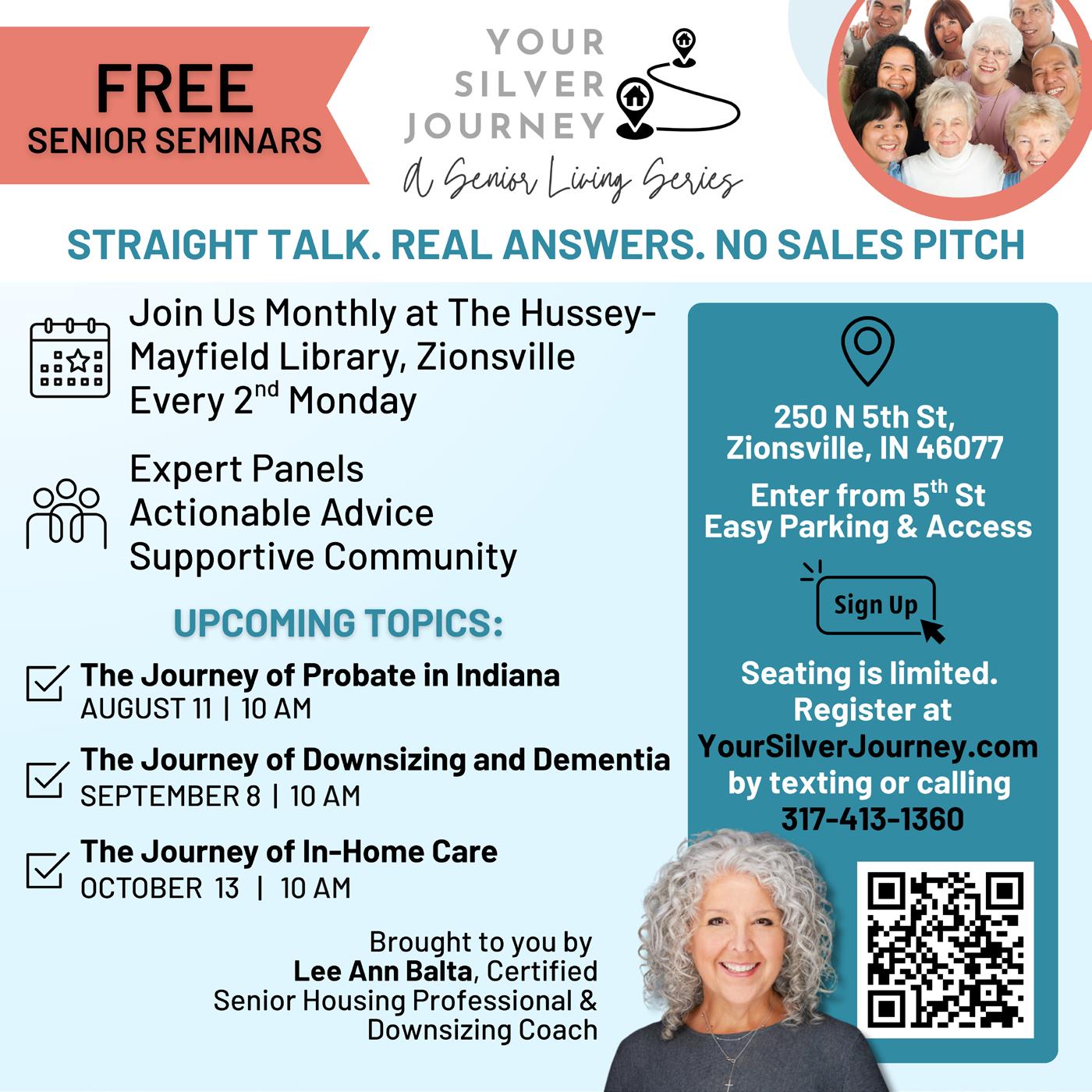
By: Dr. Leonard Buller, orthopedic surgeon and medical director of Orthopedics and Sports Medicine at IU Health Fishers
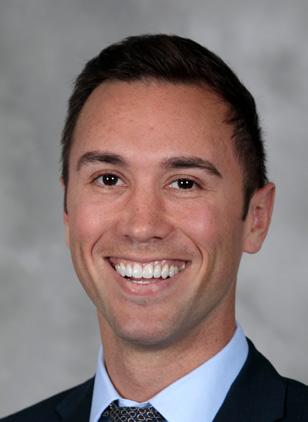
Total joint replacement surgery is a common and highly effective procedure for individuals experiencing chronic joint pain, limited mobility and reduced quality of life due to joint damage. Most often involving the hip or knee, these surgeries are typically recommended when non-surgical treatments—such as medications, physical therapy and lifestyle changes—fail to provide adequate relief. At IU Health, total joint replacement is a cornerstone of orthopedic care, with expert surgeons performing thousands of these procedures each year. The surgery aims to replace damaged joint surfaces with artificial components, reducing pain and restoring function so that patients can return to the activities they enjoy.
WHO IS A CANDIDATE FOR TOTAL JOINT REPLACEMENT?
Candidates for joint replacement are evaluated based on the severity of their symptoms, overall health and personal goals. Patients considering joint replacement are encouraged to attend a convenient virtual educational seminar, which helps them understand their condition, treatment options and what to expect before, during, and after surgery. Our team works directly with patients to create a personalized care plan for their needs.
HOW CAN YOU PREPARE FOR SURGERY?
Preparation for joint replacement begins well before the day of surgery. IU Health provides comprehensive pre-surgery educational resources and has team members dedicated to ensuring patients and their support partners have all their questions answered throughout the journey. Patients undergo a thorough medical evaluation to ensure they are healthy enough for the procedure. This includes reviewing medications, conducting blood tests and assessing cardiovascular and pulmonary function. Preparing the home for recovery is also important—this may involve removing trip hazards, installing safety equipment like grab bars, and arranging for help with daily tasks during the first few weeks post-surgery.
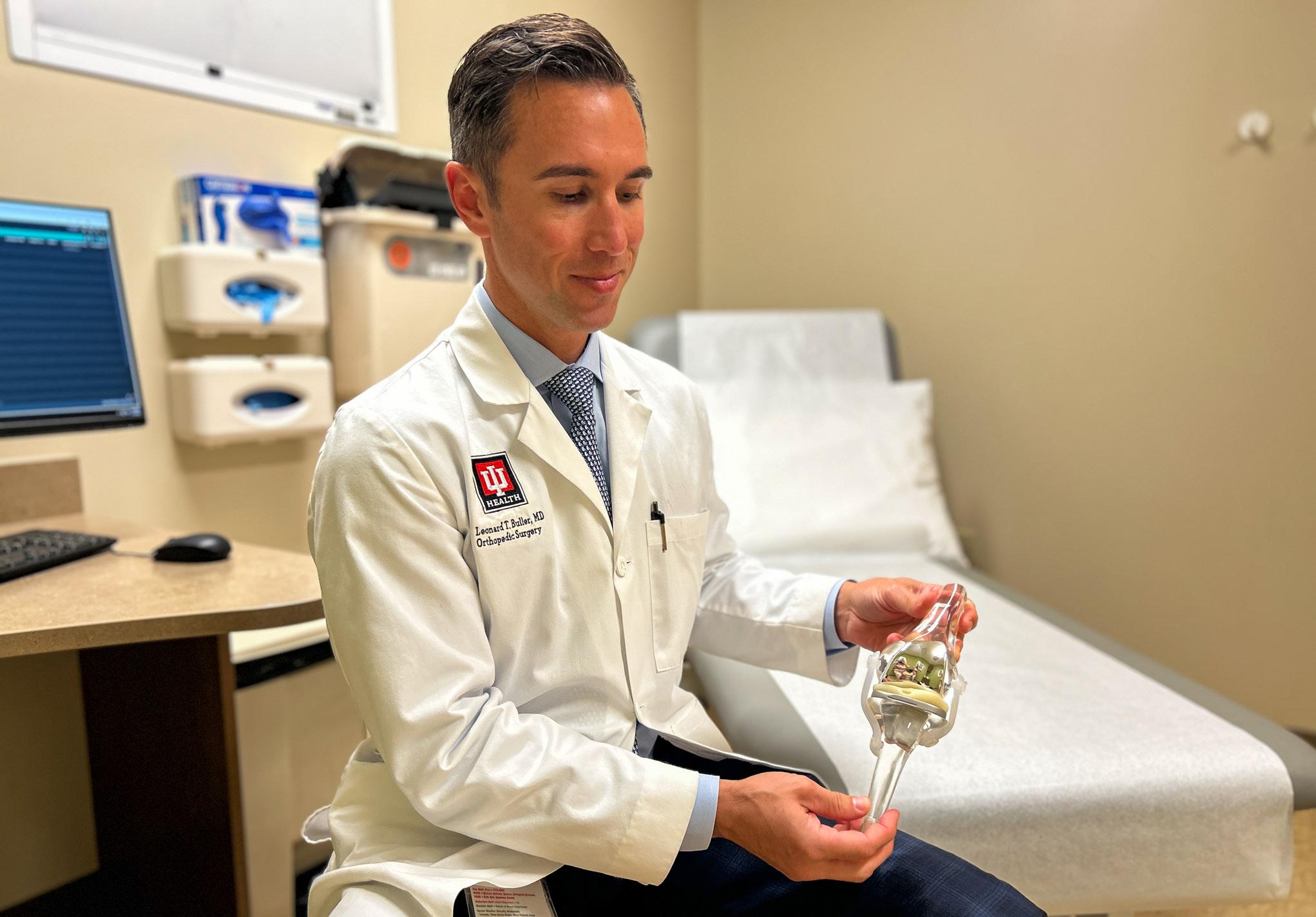
The surgery itself typically lasts one to two hours and is performed under spinal or general anesthesia. Immediately after the procedure, patients begin a carefully guided recovery process that includes pain management and early mobilization. At IU Health, a multidisciplinary team of healthcare professionals—including nurses, physical therapists, occupational therapists and case managers—works closely with each patient to ensure a smooth and safe transition from surgery to recovery. Most patients begin walking with assistance the same day or the day after surgery.
WHAT DOES RECOVERY LOOK LIKE?
Recovery timelines vary depending on the individual and the specific joint replaced. Rehabilitation begins in the hospital and continues at home or in an outpatient setting, with physical therapy playing a key role in regaining strength, flexibility and independence. Patients gradually transition from using assistive devices such as walkers or crutches to walking unassisted. While many people begin to feel significantly better
within a few weeks, full recovery and return to normal activities often take several months.
As with any major surgery, total joint replacement carries some risks. However, when performed at high-volume centers like IU Health, the risks are low, and outcomes are generally exceptional. Most artificial joints function well for 20 years or longer, allowing patients to enjoy longterm mobility and quality of life improvements.
IU Health is recognized nationally for its comprehensive joint replacement program, offering patients access to advanced surgical techniques, innovative research and coordinated care throughout the entire journey. With a strong focus on patient education and individualized treatment plans, IU Health helps patients navigate the joint replacement process with confidence. By choosing a trusted healthcare partner and preparing thoroughly for the experience, patients can look forward to life with less pain, better function, and a renewed sense of independence. Learn more about Indiana’s most preferred destination for total joint care at iuhealth.org/orthopedics.






By Mark Ambrogi mark@youarecurrent.com
Catherine Besaw was able to marry her love of books and horse racing.
At 76, the Carmel resident wrote her first book, “Worth Fighting For — a Bluegrass Romance,” which was published in April.
“My 7-year-old granddaughter wants to be an artist,” Besaw said. “I tell her, ‘Don’t wait to be in your 70s like me.’”
Besaw said the original format for the book started more than 30 years ago, but she never quite completed it.
“It was just something fun to do,” said Besaw, who also owns small shares in horses for fun. “When COVID hit, I moved into a new home on the day everything shut down (in March 2020). There was nothing much to do and I pulled out the old book, which was dated in so many formats, and I just started to write.”
During that time, Besaw met Noblesville resident Myra Levine, who has published two books. Levine also is a writing coach.
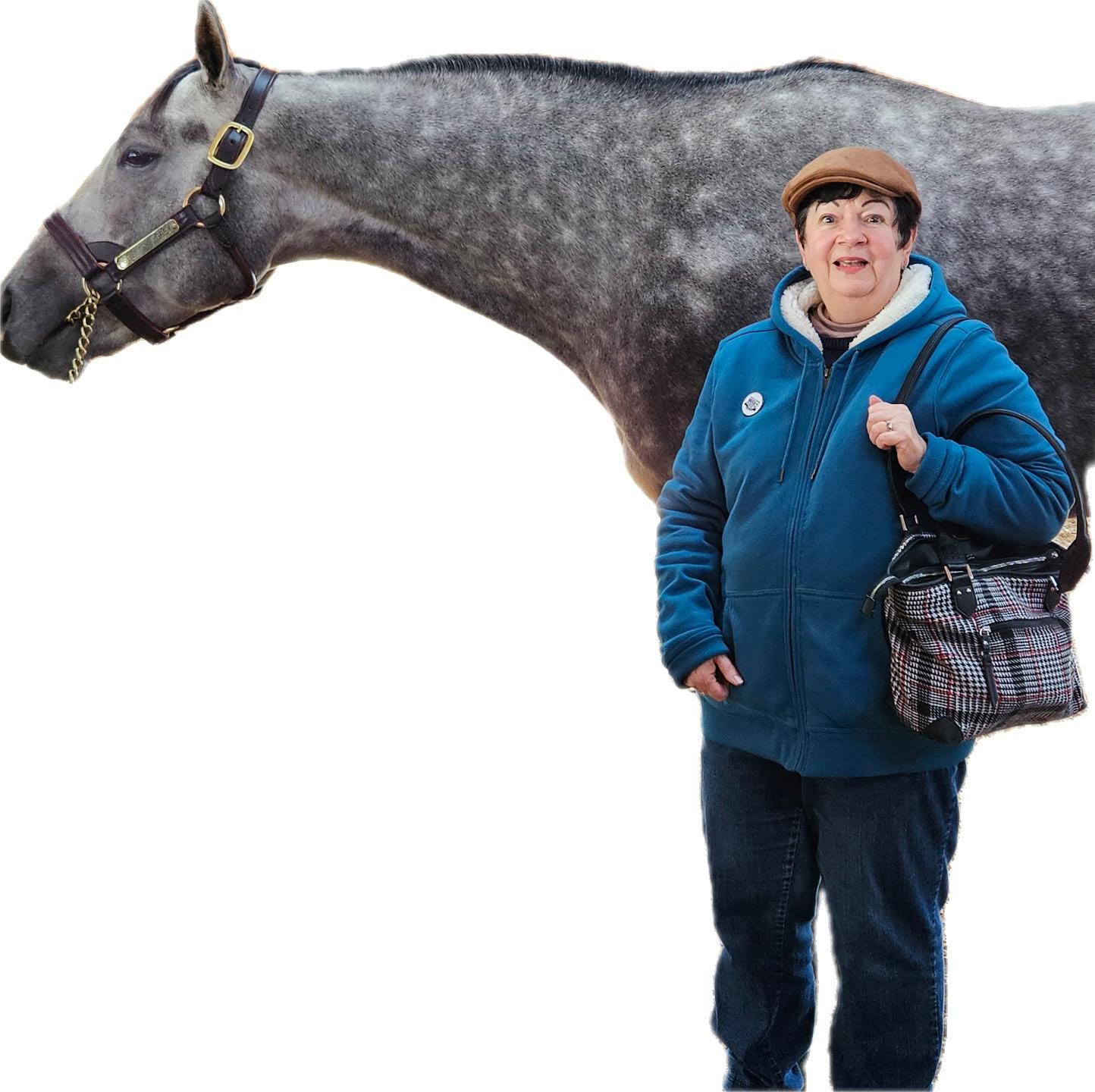
“She convinced me that I could actually write a book, that I could publish, and she would help me every step of the way, and she did.” Besaw said. “When I look at the first draft now, it was so amateurish. It just grew and developed. Myra helped me proofread and get it published through Amazon.”
Besaw said the first draft sat dormant for years,
“I was a working mother,” she said. “I didn’t honestly think that people would be interested in what I have to say and just needed something.”
Besaw said the book focuses on two things she loves — Kentucky and horse racing.
Besaw, who moved to Carmel in 1991, lived in Lexington, Ky., for seven years. She previously lived in Lake County in Indiana in the 1970s and worked for a man who owned horses and was half-owner of a farm in Lexington. Besaw’s husband, Gary, enjoyed horse racing, so they developed a friendship.
“I would work with his partner and do the secretarial work and he and my husband would go
Continued on Page 11
to the races,” she said. “We fell in love with Lexington and moved there and I worked for a man named Robert Clay.”
Clay owned Three Chimneys Farm before selling it in 2013.
The book’s plot centers on a couple, Brett and Perry, who have a bitter argument and are separated. Perry has a thoroughbred horse farm.
“The only purpose of throwing in when Perry sees a murder is to put them back together because Brett is a police detective,” Besaw said. “I had to get them back to living in the same house and that was for protection.”
She is working on a second book, “Worth Believing In,” that develops other characters in the first book. She said she wants to finish it by the end of the year.
“I like romance. I love happy endings,” she said. “I like mysteries. I lead a book club through the Newcomers Club of Carmel.”
After retiring from her work in office, Besaw worked in two scrapbook shops that both closed, and then worked parttime at Carmel Clay Public Library but had to quit because of her back issues.
“There’s a lot of bending to put books on the shelf,” she said.
Catherine Besaw became involved with MyRacehorse, where people can own micro-shares of horses.
At first, Besaw was skeptical when her husband told her about it, but then she did more research.
“I said, ‘You know we are never going to own a racehorse on our own, so let’s do it,’” she said. “He bought a couple shares in horses and so did I.”
Besaw has shares in eight horses.
She said no horse compares to 2024 Continued from Page 10

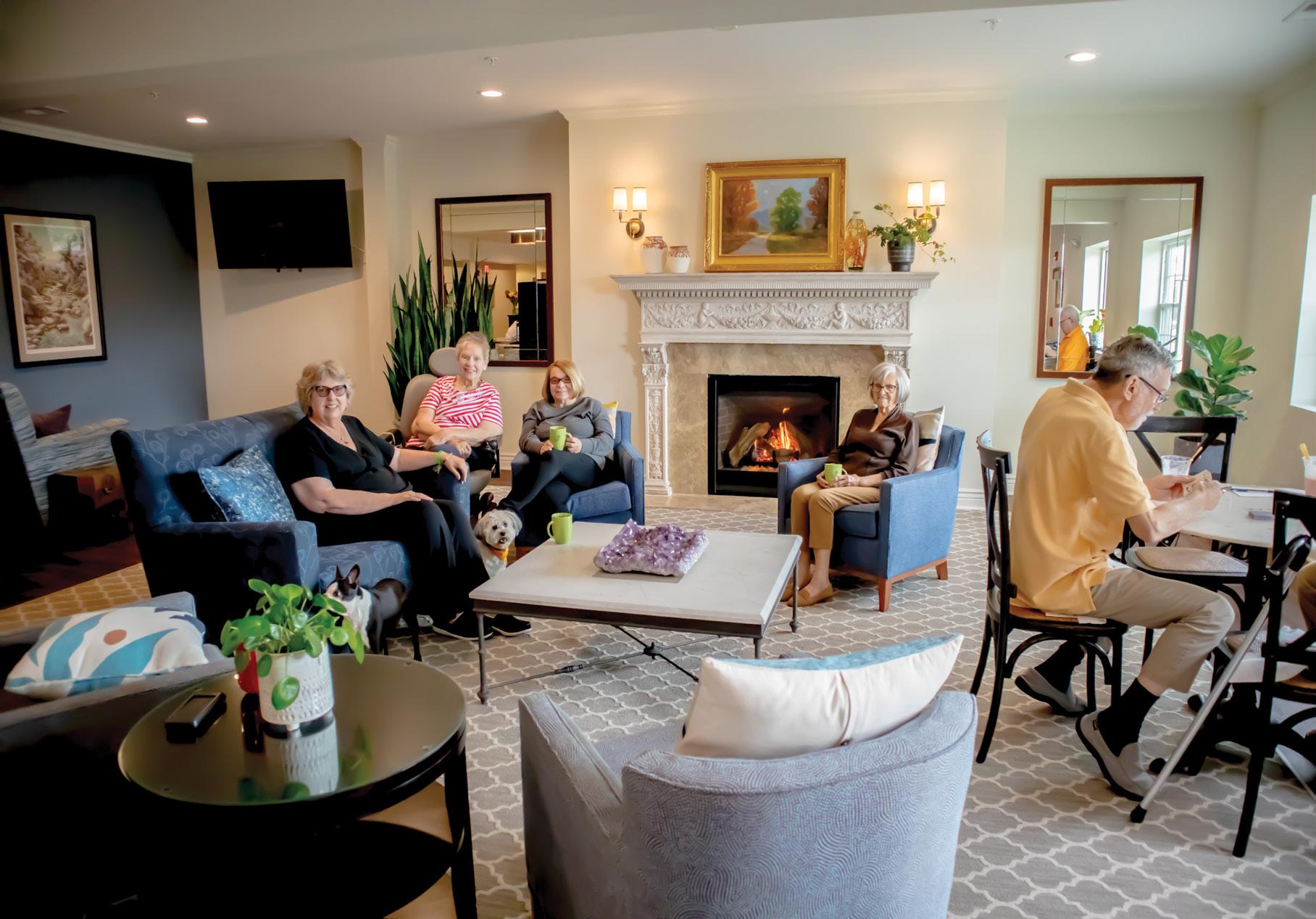
Preakness winner Seize the Grey. They now have shares in the breeding rights for Seize the Grey.
They bought the racing shares when the horse was 1 year old. Seize the Grey has more than 2,000 owners.
“That’s typically when you are going to buy your share when they are 1 year old,” she said. “You don’t do it for profit.”
There are perks, such as special trips to Keeneland in Lexington or Saratoga (N.Y), and if your horse wins, you get to go into the winner’s circle. That happened July 5 when a horse she has shares in, Elite Heat, won a maiden race at Horseshoe Indianapolis on the day of the Indiana Derby. She also visited Seize the Grey at Gainesway farm in January.
“It’s a hobby and you don’t make money off a hobby,” she said.



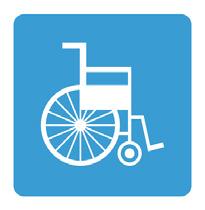

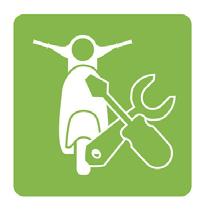
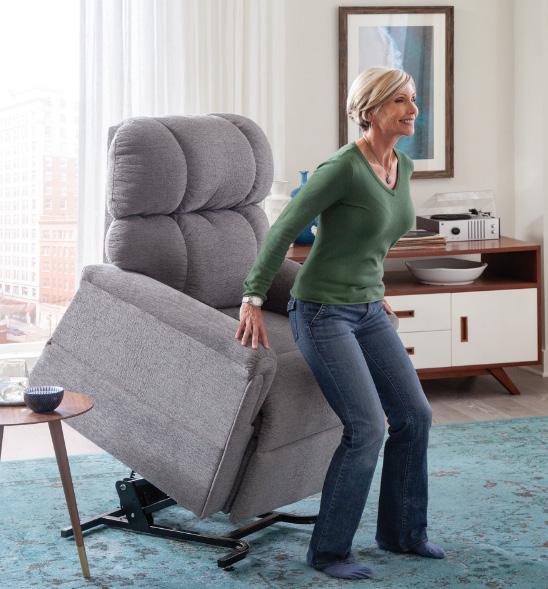
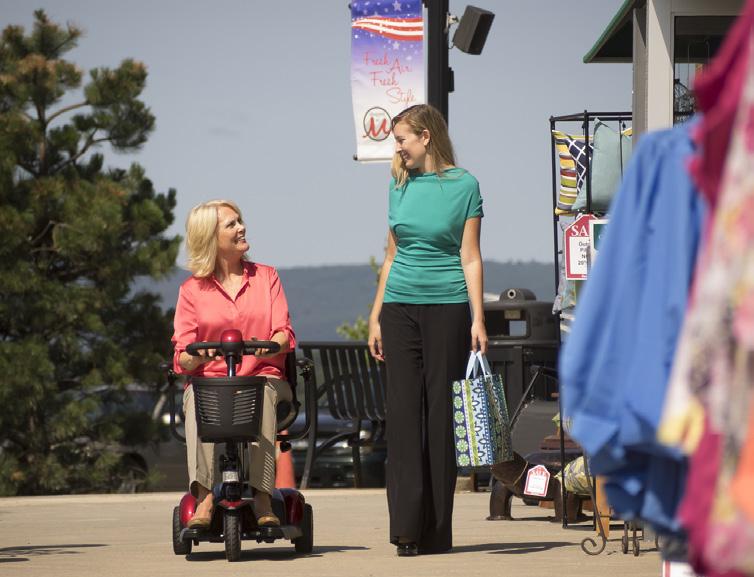
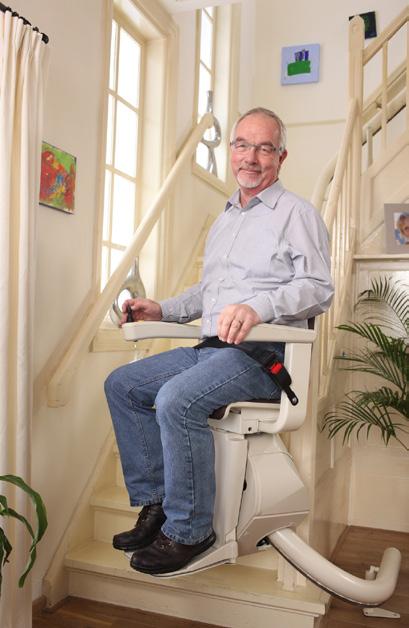
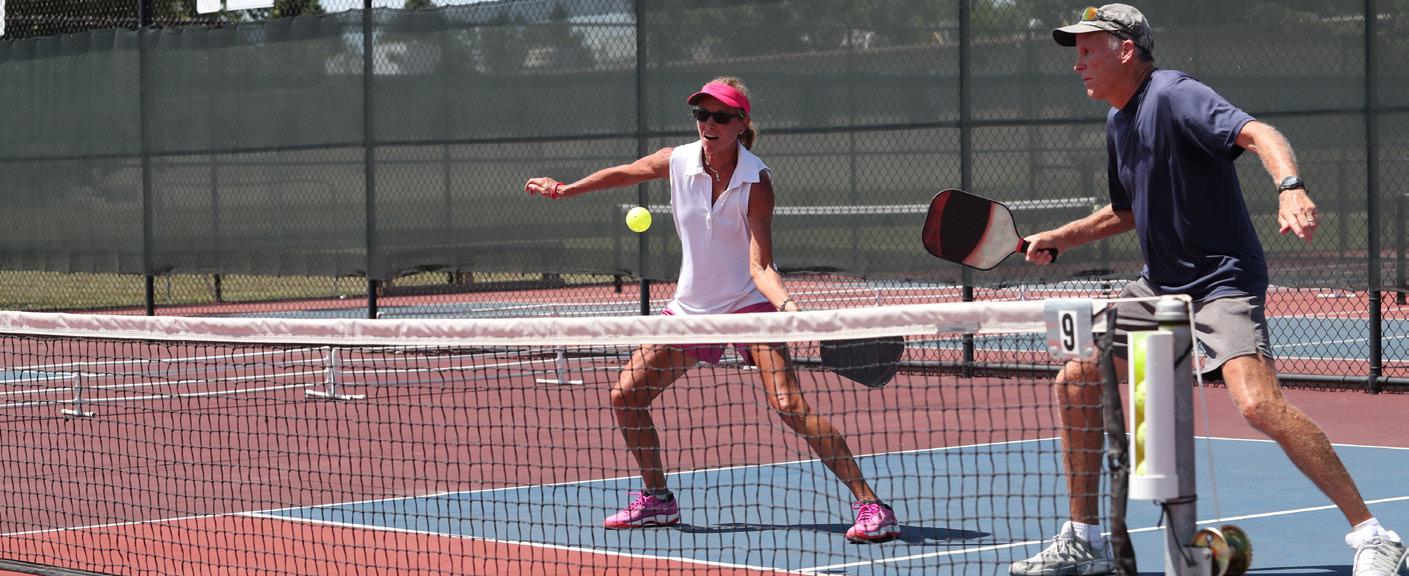
By Mark Ambrogi mark@youarecurrent.com
Sharon Terry has survived two heart attacks and two bouts of cancer but is still going strong at 87.
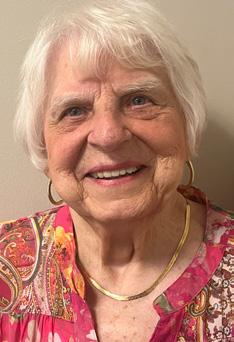
The Statford resident has led a life devoted to volunteering.
Terry has lived at The Stratford for four years. The longtime Carmel resident worked at The Stratford when it opened in 2008 as a part-time concierge.
“I was there the very first night it opened,” she said. “I lived in the Village of WestClay and I knew the person that was building The Stratford because she lived in the village.”
She previously worked in the Village of WestClay, starting in 2000. She and her husband moved to the Village of WestClay in 2004.

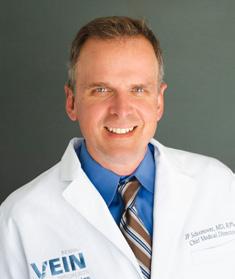



“I knew the marketing director and I was there two weeks after it opened,” Terry said. “There were 200 people in there because everyone wanted to see it. I said, ‘You need some help.’”
So, the marketing director asked if Terry wanted to work there.
“I had never worked other than being a nurse,” she said.
But after talking with her husband, she decided she did want to work in The Village of WestClay Information Center. She helped start Breakfast with Santa, an ice cream social and a croquet tournament.
Before working at The Village of WestClay, her only job was being a nurse.
Terry has four sons, who she said all have successful careers
Her son, David Broecker, was the quarterback on Carmel High School’s first state championship football team in 1978. He played football at Wabash College and then went on for postgraduate work at MIT and University of Chicago.
Her second son, Tom Broecker, attended Yale University and is head costume designer for “Saturday Night Live.”
“As my husband said, we went 11 years without a new car because they
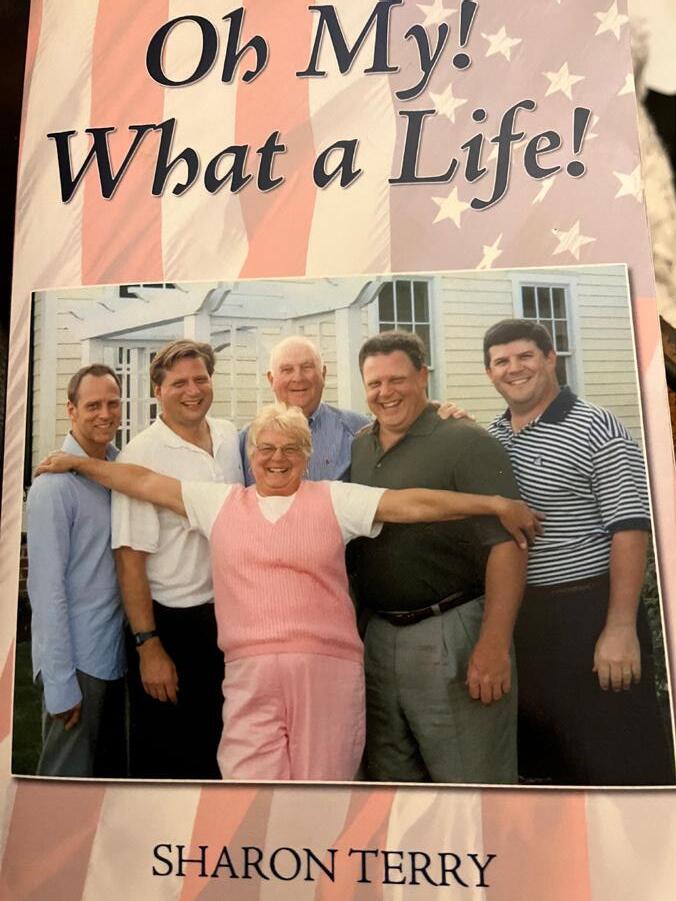
were all in these private colleges,” Terry said.
Her third son, Ed Broecker, is a lawyer and Zionsville resident. After a divorce, she had a fourth son, John Terry, who came from her second marriage to Steve Terry. A lawyer, Steve died at age 96 in 2019.
“Steve adored the boys and they adored him,” Terry said. “We had a rule in our house that if you don’t make the honor roll, you can’t play sports. We never had any trouble.”
David. Ed and John played football and Tom played tennis at CHS.
Terry was a nurse at St. Vincent but quit after her second son was born. She got divorced when her first three sons were young and moved back to the Indianapolis area after living in New York.
She worked as a nurse for an ear, nose and throat doctor. She and Steve moved to Carmel in 1971 after getting married. All four sons graduated from CHS.
Terry served two terms on the Carmel Clay Schools Board of Trustees. She also helped start Coxhall Guild to support Coxhall Gardens and Mansion.
The only thing that has slowed Terry recently was a second hip replacement. Her femur broke when she was moved
Continued from Page 5
to the operating table. She developed lymphedema, which occurs when lymph fluids build up, which sometimes causes swelling.
“When I had the first cancer, they took out all the lymph nodes in my groin,” she said.
The first cancer was metastatic squamous cell, a type of skin cancer, and the second cancer occured three years later. It was metastatic ovarian cancer.
“I had radiation, chemotherapy and never had another cancer,” she said.
For her eight grandchildren and two great-grandchildren, Sharon Terry decided to write a book, so they would have her memories.
“Oh My! What a Life!” was published in 2010.
“One of my sons gave me a book on how to write a book on your life story,” she said. “I would write one or two pages when I went to Florida, but then my grandson, who was 11 then, said, ‘I didn’t know you were poor growing up.’ After that, I decided I had to get busy (writing).”
The book follows Terry growing up in poverty as the youngest of seven children. Her father died when she was 9 years old.
Her mother remarried when Terry began high school and then moved from Washington to Poseyville. She graduated from Poseyville High School with 29 students in her graduating class.
After her second marriage, Terry began volunteering. She volunteered at Saint Elizabeth Seaton Catholic Church and at Carmel Middle School.
“They didn’t have a paid nurse, so I volunteered as a school nurse,” she said.
“I did that for a couple of years and then spent 13 years on the PTO. Then they gave me a plaque for 13 years of devotion to Carmel Middle School.”
Terry then became president of the CHS PTO and an elementary school PTO. In 1984, her husband suggested she run for school board.
She has continued volunteering at The Stratford. She is an elected member of the resident advisory council, serving on dining, activities and welcoming committees.
“I love to stay busy, and I enjoy people,” she said.
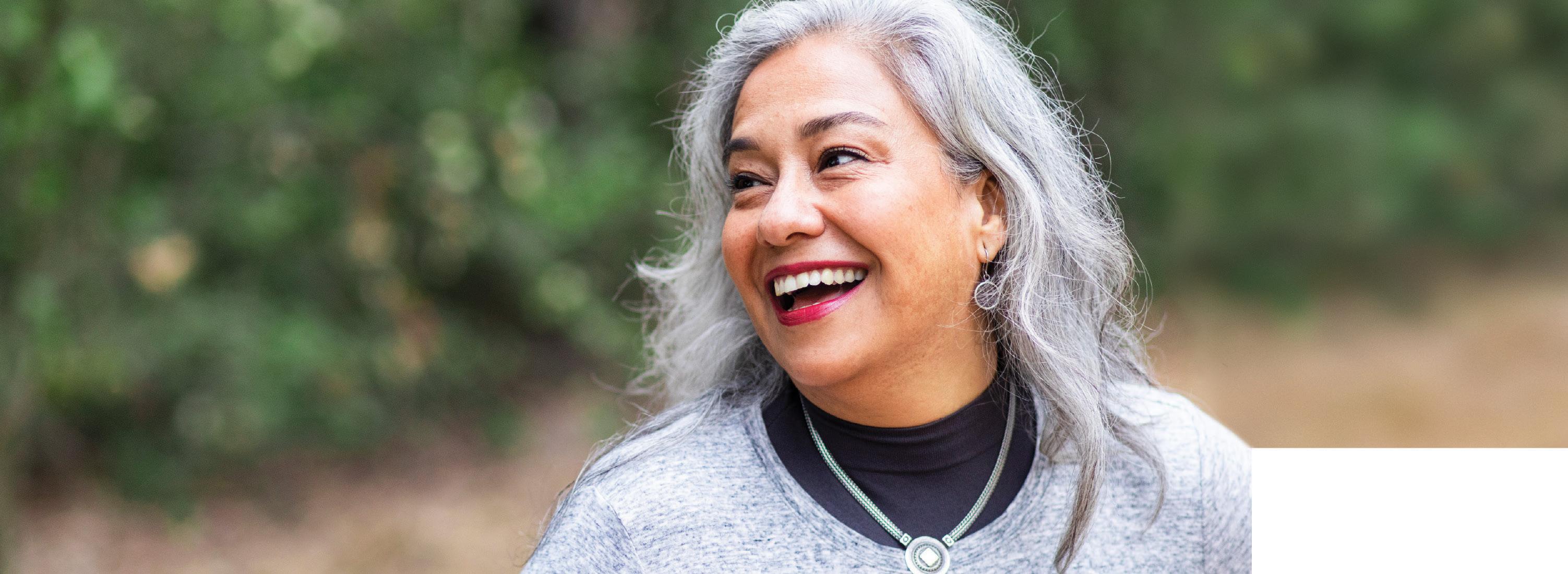

I’m Kimberly Hughes, a licensed sales agent in Hamilton County, serving central Indiana. When it comes to Medicare, it’s important to consider all of your options. What works well for your neighbor may not be the best fit for you. I know the ins and outs of Medicare, and I’m ready to answer your questions and help you find a plan that fits your needs. Make the most of my knowledge and experience to:
• Take the confusion out of Medicare
• Get help comparing plans
• Receive one-on-one service
• Make enrolling in a plan easier
I look forward to helping you explore your Medicare options so you can enroll in a plan with confidence.
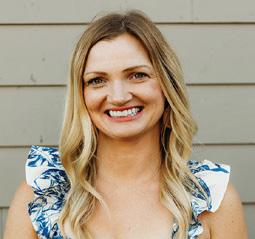
Kimberly Hughes Licensed Sales Agent 3177925227, TTY 711 berlyhughes@gmail.com www.myuhcagent.com/kimberly.hughes

Commentary by Dr. David Sullivan and Dr. Kenneth Stumpf
ickleball, a game that combines elements of tennis, badminton, and table tennis, has rapidly gained popularity among older adults, particularly those 55 and older. Its social and physical benefits make it an appealing choice for maintaining an active lifestyle. However, like any sport, pickleball comes with its risks, especially concerning foot, ankle and calf injuries. Understanding these injuries and seeking professional treatment can help players stay active and healthy.
Common injuries in pickleball Ankle sprains: One of the most frequent injuries in pickleball, ankle sprains occur when the ligaments supporting the ankle are stretched or torn, often due to sudden movements or awkward landings. Older adults are more susceptible to these injuries due to decreased ligament elasticity and balance issues.
• Achilles tendinitis: This condition is characterized by inflammation of the Achilles tendon, which connects the calf muscles to the heel. Overuse during dynamic movements common in pickleball can lead to pain and stiffness, particularly in players who may not have engaged in regular physical activity prior to starting the sport.

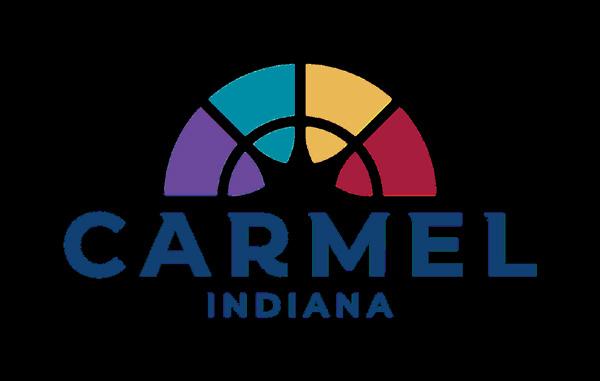
Plantar fasciitis: Many pickleball players report heel pain related to plantar fasciitis, a condition resulting from inflammation of the plantar fascia, the tissue that runs along the bottom of the foot. It can arise from the repetitive impact associated with pickleball and wearing inadequate footwear.
Calf strains: This injury involves a tear in the calf muscles and often occurs during explosive movements such as sprinting or sudden stops, which are common in the fastpaced nature of pickleball.
Risk factors for older adults
Players older than 55 face unique risk factors that can increase the likelihood of foot, ankle and calf injuries. These include:
• Decreased flexibility: Aging often
results in reduced flexibility, which can limit range of motion and contribute to injuries.
• Reduced muscle strength: As we age, muscle mass and strength tend to decline, making older adults more vulnerable to strains and sprains.
• Balance issues: Impaired balance can lead to falls and increased risk of ankle injuries.
Importance of professional treatment
Proper treatment and management of foot, ankle and calf injuries are crucial for older pickleball players. Consulting a podiatrist can provide several benefits:
• Expert diagnosis: Podiatrists specialize in diagnosing and treating foot-related issues, ensuring you receive the correct diagnosis and treatment plan.
• Customized treatment plans: They can create tailored rehabilitation programs that consider individual health needs and activity levels.
• Preventive advice: Podiatrists can recommend appropriate footwear, orthotics and stretching exercises to prevent future injuries. Encouraging active lifestyles Staying active is vital for overall health, especially in older adults. Although injuries can be daunting, understanding the potential risks and prioritizing foot and ankle health will help players enjoy pickleball safely. By seeking the expertise of a podiatrist, older adults can address any concerns, get back on the court faster and continue playing the sport they love.
In conclusion, it’s essential for pickleball enthusiasts aged 55 and older to remain vigilant about their foot health. With the right knowledge and support, they can minimize their risk of injury and enjoy the many benefits that this fun sport offers. Remember, prioritizing your foot care is a crucial step in maintaining an active, healthy lifestyle.
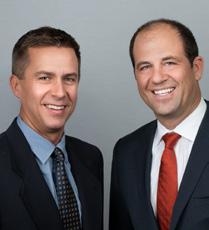
and
are boardcertified foot surgeons at Westfield Foot and Ankle, LLC. Contact them at appt@westfieldfoot.com or 317-896-6655.
By Mark Ambrogi mark@youarecurrent.com
Aretired newspaper columnist, Carmel resident Garret Mathews finds a way to stay busy.
Mathews, 75, has written several books and plays since retiring in 2011 after 24 years of being the metro columnist for the Evansville Courier & Press. Prior to that, he wrote columns and features for the Bluefield (W.Va.) Daily Telegraph.
“I like to think of it as a toy. It’s just fun for me,” he said of writing books and plays.
His latest book, released in June, is “Fractured Country Song Titles,” a series of humorous country song titles with illustrations. He doesn’t expect to make a lot of money from it but said he would be happy to get his book in Cracker Barrel, a Branson, Mo., gift store or get some country and western radio stations to discuss it.
“It would be nice to have some success,” he said. “It’s something to play around with. I’m a writer, not a book salesman.”
His first humor book was “From My Funny Bone (hopefully) To Yours,” a collection of 46 humor columns, in 2024.
“In 1971, what I really wanted to do was to write humor columns,” said Mathews, who graduated from Virginia Tech that year.
Mathews had hopes of writing a humor column for a metro paper. He sent samples but got a job as a reporter with the Bluefield Daily Telegraph.
“After a while, I got a once-a-week humor column there,” he said.
At the Evansville Courier, he wrote a mix of columns, some based on interviews, some on opinion and some humor.
“To me, the hardest writing to do is humor because it’s (the beat) of a song,” he said. “If your punchline is out of whack (the humor doesn’t work). With these (song) capsules, it’s the same thing. If you have one or two too many words, it’s not as funny.”
Mathews said it was fun to come up with the song captions.
“I started with the idea of doing 20 or 30, and then I got the idea to do 80 to 100 in the book,’” he said. “The
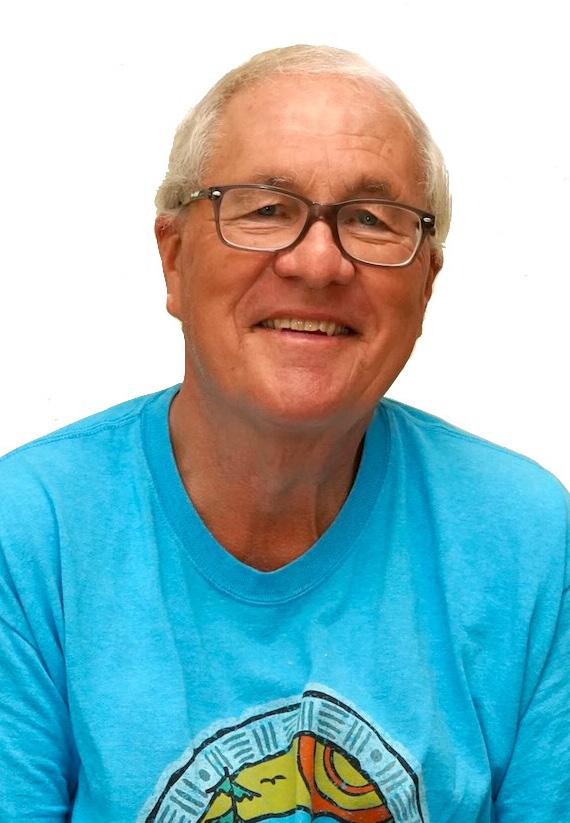
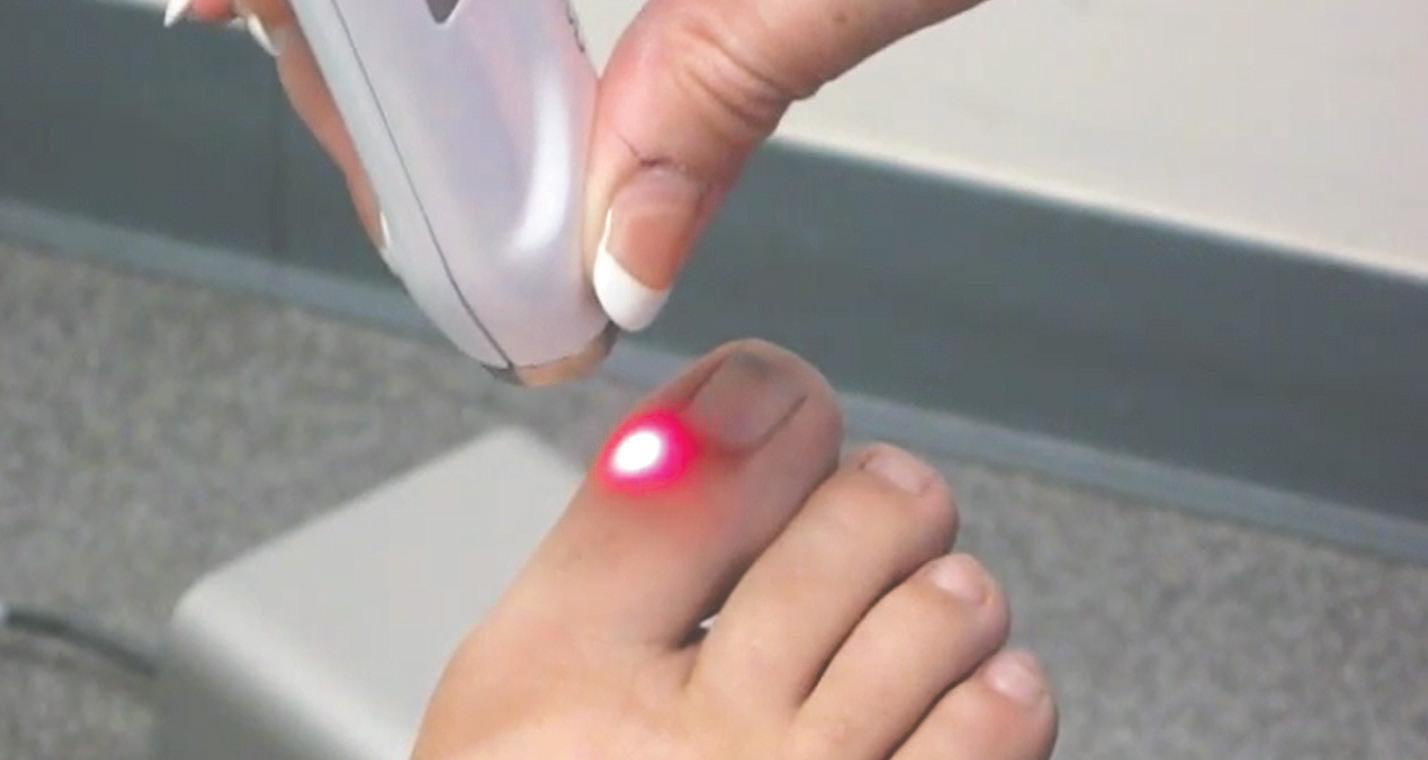
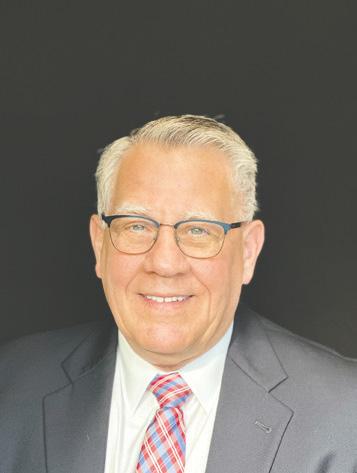
idea came in the 1970s and ‘80s when I occasionally wrote a column of silly country and western song titles. I wrote a couple columns like that in Bluefield and two or three in Evansville.”
After writing some more, he found a talented illustrator in Tim Eterno.
Some of the song titles include “Sleeping Single in a Double Bed,” “You’re the Reason Our Kids Are Ugly,” “May the Bird of Paradise Fly Up Your Nose,” “She’s Acting Single, I’m Drinking Doubles” and “Beer Never Broke My Heart.”
His theatrical play about the Civil Rights Movement, “Jubilee in the Rear View Mirror,” has been performed three times.
His books include “Swing Batta,” which was published by Michigan State University Press, is about coaching 10-year-old baseball players.
When not writing, Mathews enjoys spending time with his three grandchildren.
By his own admission, Mathews gets bored easily. During the COVID-19 pandemic in 2020 and 2021, he practiced juggling a 16-pound shot put and bean bags.
For more, visit pluggerpublishing.com and garretmathews.com

